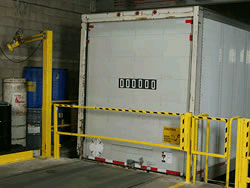“That will not happen in my warehouse. Our operator training programs are too effective. I do not want the added costs in my bid.”
Look, accidents happen.
Warehouse workers are especially susceptible to injury because of the nature of their occupation. According to the U.S. Bureau of Labor Statistics, warehouse workers are getting injured at a rate of 5.1 injuries per 100 workers annually, according to the most recently reported statistics.
While accidents involving forklifts garner much of the attention related to warehouse injuries, falling objects are much more likely to cause serious head and brain injuries. According to the Occupational Safety and Health Administration (OSHA), 93 people died in the U.S. alone in 2016 from being struck by objects in a warehouse workplace.
Because of this type of injury’s severe nature, it is essential to evaluate your current practices and determine if there is a product or solution designed for prevention that you can integrate into your racking system. In addition to preventing workplace injury, these tactics can also prevent inventory loss in an accident or seismic activity.
Whether you are looking to retrofit your current setup or design a new racking system that includes additional safety measures, there are plenty of safety solutions out there to help you and your employees keep peace of mind while at work.
Backstop Beams
Pallet load stop beams – also known as backstop beams—act as a robust physical barrier on the backside of your pallet rack that prevents the product from being placed too far back where it could potentially fall over the edge. Because of the traditional racking configuration, where there may be some pallet overhanging the back beam in the bay, it gives your racking increased security against a potential accident.
The downside of these backstop beams is the cost associated. If you are not including backstop beams as a component of your initial design, there may be some reconfiguration required in your rack installation. The beams often sit back a few inches from your uprights and may interfere with flue space required by fire safety regulators.
Rack Safety Straps
As a less expensive alternative to backstop beams, rack safety straps can easily be installed to support your safety efforts. Straps are mounted to the back of your uprights, preventing pallets and packages from pushing into the flue space or falling off your rack’s back. While these options are sturdy to a point, they are certainly less secure than installing steel backstop beams into your rack. However, because of the cost and adaptability to various configurations, rack safety straps are a popular option to keep workers safe from falling objects.
Netting
Similar to rack safety straps, netting offers a relatively inexpensive option to decrease the possibility of objects falling from your racking system. The mesh acts as a barrier to keeping your products within its designated space. This barrier is especially beneficial in situations where the warehouse worker will need to see through the racking and when there may be loose products or boxes within a bay. However, like backstop beams, netting is best applied during the installation of your racking system.
Wire Backs
Wire back panels are another option to prevent workers from being struck by falling packages and objects. Depending on the gauge of wire used, these wire panels are customizable to help contain the size and heft of the loads in your warehouse. Wire back panels are most similar to netting as a containment option, though wire backs are more durable & better at containing heavier loads. Wire back panels are the most effective method for rack back protection & thus have a higher cost associated with their use.
Find Warehouse Safety Solutions to Fit Your Business
While each of these options has its benefits and drawbacks, increasing safety within a warehouse is paramount for warehouse and safety managers. If you are looking to integrate additional safety products and solutions into your operations, give us a call. We can help you navigate the regional regulations you may be subject to and offer low-cost, high-reward solutions that may augment the level of safety in your workplace. So much of finding the right solution depends on the configuration and layout of your racking. Let us guide you to the right solution for your warehouse.
Going beyond the minimum regulations –whether they are put forth by your municipality or insurance provider – provides benefits beyond the numbers. After all, the prevention of workplace injury will pay for itself compared to the cost of potential injury – or worse – to an employee.

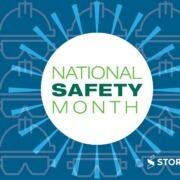
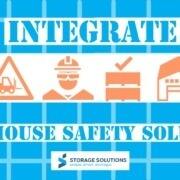
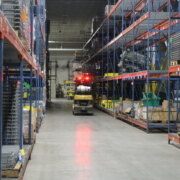
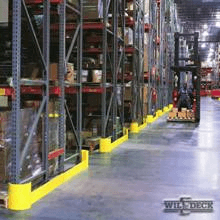 So with the amount of information available, solutions from suppliers like Storage Solutions, and quality products from manufacturers such as Wildeck, why is the fatal injury rate for the
So with the amount of information available, solutions from suppliers like Storage Solutions, and quality products from manufacturers such as Wildeck, why is the fatal injury rate for the 